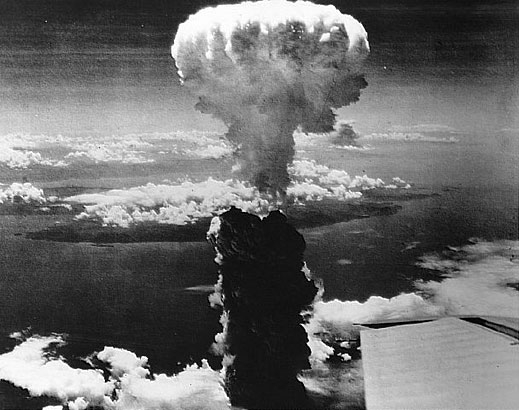
Philip Matranga, now 92 years old, silenced audiences in the George Bush Presidential Library and Museum when he shared his recollection of the atomic bombing as a World War II veteran.
“It’s been quite an experience,” Matranga said.
Philip Matranga was on board the plane as one of the soldiers ordered on a mission to drop the first atomic bomb on a clear day of August 6, 1945.
The bombing of Hiroshima was, for many historians, the event that forced Japan to finally surrender to the Allies during the Second World War. For Matranga, the event was an unforgettable piece of his memory.
“At that time we didn’t know how important it was,” Matranga added.
He was one of air and ground crew of plane, Enola Gay, which carried the bomb to Hiroshima, Japan. He was tasked to guard the atomic bomb nicknamed, Little Boy, which when dropped on the city of Hiroshima gave a huge explosion the world never forget.
“We did just a good job bombing that we didn’t even know what we were bombing. We didn’t know anything about it until the president talked about it the next day,” Matranga related.

His sister, Margaret Apffel, was with Matranga during the event. She was teeming with pride as the library and museum displayed the propeller blade of the Enola Gay, a very important symbol of the Hiroshima bombing.
“He guarded the plane till it took off and never even knew what it had on it,” Apfell shared.
She shared that their family was in celebration because their brother was part of the historic event.
“To have this here at the university is a thrill,” Apfell said. “To know my brother was apart of it… it’s history.”
The Enola Gay, a Boeing B-29A Superfortress Bomber, delivered the first atomic bomb to Hiroshima. The plane is known as “the plane responsible for the surrender of Japan”. More than half of the city was destroyed and thousands were reported as casualty.
The historical plane underwent controversial restorations and displays in the past. The fully restored Enola Gay is now on display to the public. The propellers of the plane were handed over to Texas A&M University shortly after the war.
One propeller originally used during the bombing mission was trimmed and utilized by the university to provide wind speed for their Oran W. Nicks Low Speed Wind Tunnel. The propeller is lightweight and made of aluminum.
Three days after the staggering incident at Hiroshima, the United States dropped another atomic bomb nicknamed Fat Man at Nagasaki, Japan this time by the B-29 Bockscar delivering the final blow to the Japanese.